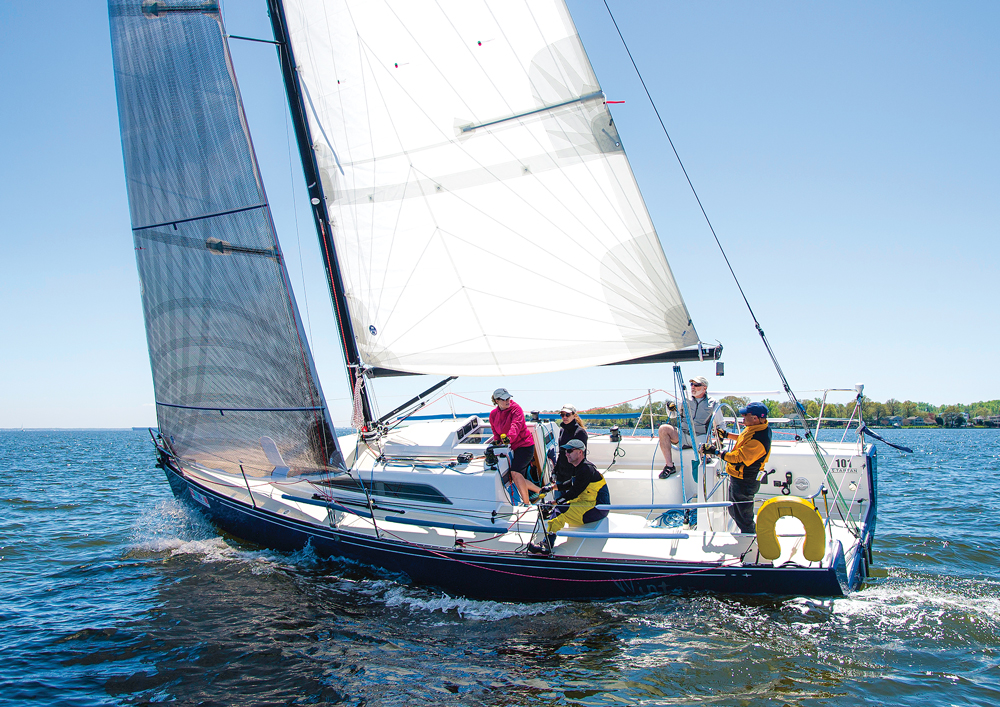Co-owning a boat
Sharing the cost, labor and enjoyment of boat ownership can be the perfect solution when structured properly
The lucky boat owner is one who enjoys a boat partnership. Owning alone (or with a non-interested co-owner) versus owning a boat with another passionate sailor is like the difference between a dead weight and an anchor. One drags you down, the other steadies you when you need it, but allows for adventure and redeployment.
I have owned three sailboats. I bought my first in my 40s—a Tanzer 22 that was solid, compact, and a great first boat. The second boat you couldn’t really say I owned—the man in my life at that time owned it, and while we sailed together—raced and cruised—I had no financial stake in it. That, it turns out, was a huge mistake, but we’ll come back to that. My current boat I co-own in a 50-50 boat partnership.
Like Goldilocks’, my current iteration of boat ownership is “just right.” As with the sailboats themselves, there are many variations in ownership, and the right fit involves a bit of experience, planning and dumb luck.

I sold that boat when a man I became involved with and I decided that a bigger boat might fit our lives. My Tanzer 22, while perfect for me at 5 feet 2 inches tall, didn’t fit his burgeoning desire to become a cruising sailor. He was a large man in girth and height, over 6 feet. I was amenable—here he was offering to upgrade our cruising means. What could possibly go wrong? Well, it turns out plenty, after 10 years and his failing health I pulled out from the partnership. In my own naive failure I had let him control the boat’s pursestrings. As the years rolled on I realized that his check writing made him believe he could dictate my use of the boat. The final straw was his inability to allow me to singlehand the 34-foot boat. Let’s just say I learned a lot about how not to own a boat during those years.
Which brings me to boat No. 3, Wildwood, a one-ton racer-cruiser that I was asked to participate in with a 50-50 co-ownership stake. The offer was made by a lifelong friend, whose past has included building a schooner, running a boatyard, house carpentry and sailing his entire life in all manner of boat, from turnabouts to 12 1/2s, Etchells to unique Ray-Hunt plywood craft. He can make anything sail fast.
The most obvious observation about co-ownership is that your choice of partners matters. It’s like any relationship—watch for red flags. Use your sense and intuition to ensure that the connection features mutual respect at its core. From there you can work out the other key features of a healthy boat partnership: equity, trust, accountability, cooperation, support, honesty, and an agreement about standards of safety. Each of these will have its own unique iteration in your partnership. Equity in our boat partnership, for instance, is not wholly a question of splitting bills 50-50—it’s our mutual attempt to do what we can to make it equitable. My partner Geo, as I have said, is a boatwright and skilled in all manner of refit work. My skills run to the organizational, electronic and grunt-work side of things. So while our skills will never be equal, we work to make sure that neither of us feels overburdened either financially, or in other resources—time, energy, skills. And there is flexibility in how we each show up and execute that equity.

Comments